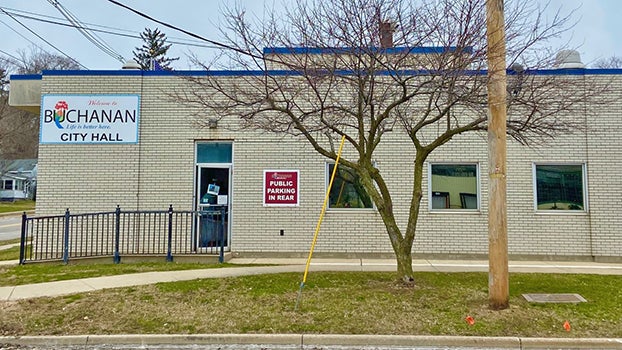Silverbrook Legacies: Early communications were their specialty: The Hustons
Published 9:04 am Wednesday, March 31, 2010

Silverbrook Cemetery's only Revolutionary War soldier is Thomas Huston Sr., who followed his son Amanson to Niles in 1830 with his wife and 14 children.
By FRIENDS OF SILVERBROOK CEMETERY
The Niles Daily Star is pleased to continue the historical series on those buried in Silverbrook Cemetery. We join the Friends of Silverbrook Cemetery in welcoming your suggestions and input for future columns.
In the 1800s communication was a big deal. Though we are privileged to have a potpourri of 21st century communications methods at our fingertips, during those early days of the Michigan Territories pioneers were basically limited to two: in-person and by mail.
The Huston family facilitated both of these.
Amanson Huston came to the area in 1828 as an Indian trader and peddler. He must have seen the potential of what he found here as by May 1829 he had opened the first hotel in Niles.
The tavern known as Council House, was originally a log house owned by William Justice. A framed addition was completed by Henry Drew in 1830 on the east part of the log cabin that was the bar room. The addition served as the first courtroom in Berrien County.
Many accounts exist attesting to the building serving the community as a great meeting place. A document outlining the historic significance of the building at 224 North Front St., which was eventually known as the John B. Reddick building, tells of a momentous community event held July 4, 1830.
“A sycamore flag pole 60 feet in length was cut by Henry Drew on the farm of Mr. Shuert and hauled to the ground on the afternoon of the 3rd and raised on the morning of the 4th,” the document states. “The celebration took place on a piece of open ground in front Huston’s tavern and between Walling’s house and the river. Fifteen or 20 men were present at the first celebration in Niles. The declaration of independence was read by Col. Edwards of Edwardsburg, Mich. and dinner was prepared by Col. Huston and served by the shade of some saplings which had been temporarily arranged on the ground for the occasion.”
The year 1832 was a busy one for the area. During this time, Niles’ first school had been moved to Huston’s property and his daughter Melvina taught there. The intro to “Public Schools of Niles 1866-7” stated that she continued until the sudden outbreak of the Blackhawk War, when General William’s Cavalry moved into the building so the school was disbanded.
Huston and others fought in the Black Hawk War after troops were mustered in the spring. As the military fought for the land, the first of the old county court was held that July.
A relative of Huston, Eber Griswold, seems to have extended some financial support to the colonel by paying off the colonel’s indebtedness to William Justice and transferred the title into his (Griswold’s) name.
Huston’s father, Col. Thomas Huston, is the only Revolutionary War veteran interred at Silverbrook Cemetery. “A Twentieth Century History of Berrien County” by Orville Coolidge states that in “1830 his (Huston’s) father Thomas Huston, then 62 years old came from the state of New York with his wife and 14 children.”
Is it a coincidence that this is the same year as his son Col. Amanson Huston established his stage line?
From the History of Cass County we learn: “Although the Chicago road did not pass through Niles, a branch was established from Edwardsburg to that place at a very early day and much of the travel went that way. The first stage coaches in Cass County passed through in the 1830 upon the Chicago road and the above-mentioned brand. The line was established by Colonel Alamanson Huston and connected Niles with Detroit.” (Note: The spelling of the Colonel’s name appears as both Amanson and Alamanson. Sometimes both spellings are used in the same publication as in “A Twentieth Century History of Berrien County.” However, all references confirm they refer to the same man.)
The stage also brought a new method to deliver the written word to the pioneers of the area. Coolidge’s accounts tells that Huston’s son Thomas had begun delivering the mail between Niles and St. Joseph, often on foot, in 1828 while still in his teens.
“Berrien’s Beginnings” recounts: “In the year 1828 a boy named Thomas Huston carried the mail on horseback from Niles through Wolfe’s Prairie (now Berrien Springs) to Saranac (St. Joseph). At that time the mail was carried on horseback the entire distance from Detroit to Chicago.”
Whether on foot or on horseback; it seems the younger Huston went on to continue the family’s “communication’s business” and he added one more mode of connecting people to people. He went on to have charge of the Niles ferry.
The Journal of the Legislative Council of the Territory of Michigan Volumes 3-4 for Thursday, January 6 1831 records: The president presented a petition from Thomas Huston and others of the county of Cass; praying to be separated from that and organized into an independent county.
And a petition from B and M Finch for the establishment of a ferry at the Village of Niles county of Berrien and authority to keep it.”
Did Benoni and Moses Finch recruit the young mailman that very day? We may not know. Neither can we hope to understand fully the impact this family had on the development of the territory.
What we do know is that Coolidge suggests the colonel departed to the southern states and that his son Thomas remained in Niles until his death in 1896 having married Ann Perkins, who came to Niles with her father Ira R. Perkins from New York, probably on the stage his father brought into existence.
They were married 65 years and no doubt spent many hours discussing this community’s earliest days with Thomas’ sister Clarissa and her husband Jeremiah Ballard, grandfather of Ralph. Thomas was also Ralph’s wife Mary’s grandfather.
Our local history continues to reveal more interesting facts. The Friends of Silverbrook Cemetery are committed to bring these to you. Are you a history buff? Friends of Silverbrook Cemetery meets the third Thursday of each month at the Niles Law Enforcement Complex on Silverbrook at 7 p.m. For more information with regards to memberships and workdays to help restore and catalog the monuments contact: Friends of Silverbrook Cemetery c/o 508 East Main St. Niles MI 49120, Tim and Candace Skalla at 684-2455, wskalla@sbcglobal.net or contact Ginny Tyler at 445-0997, sphinx1974@aol.com.






